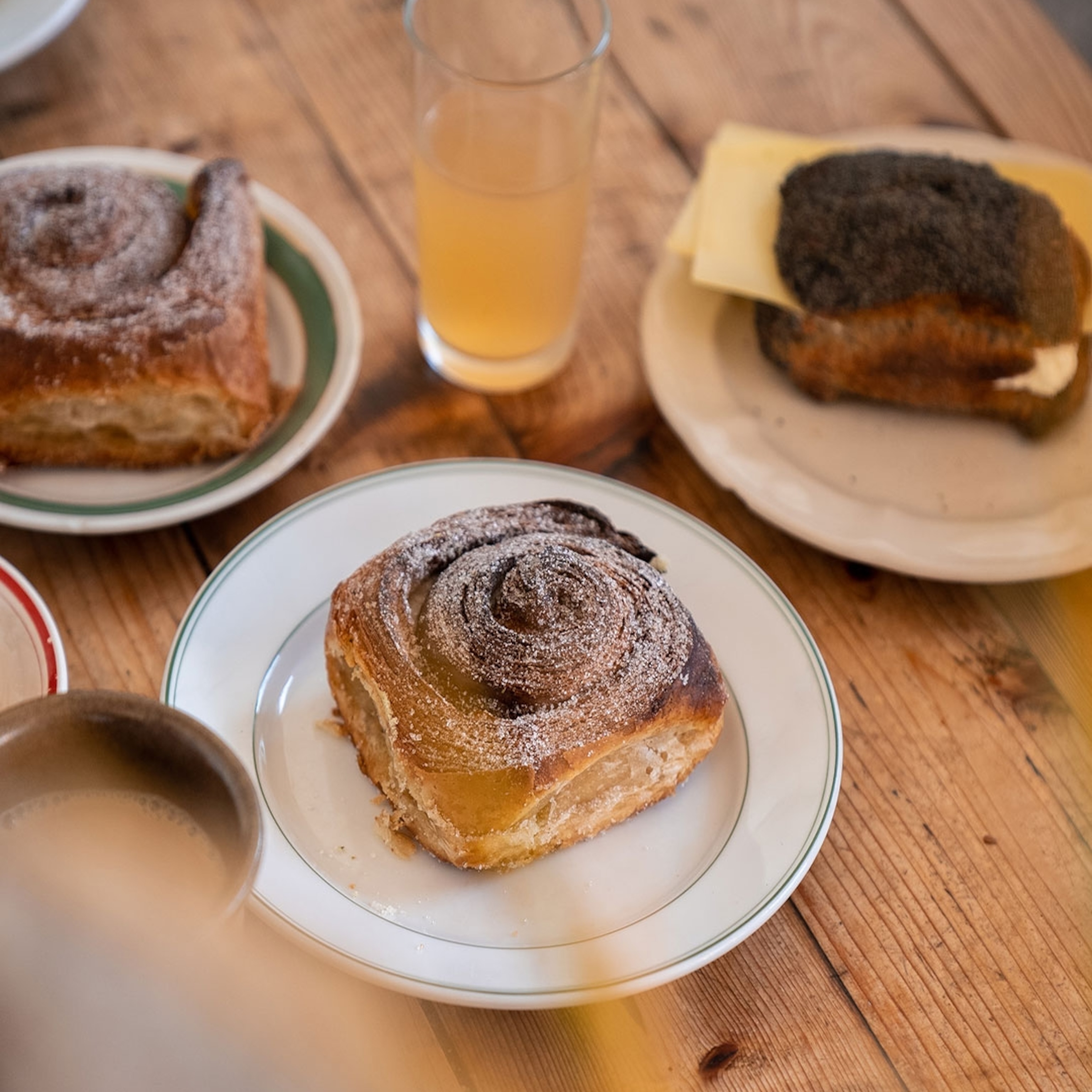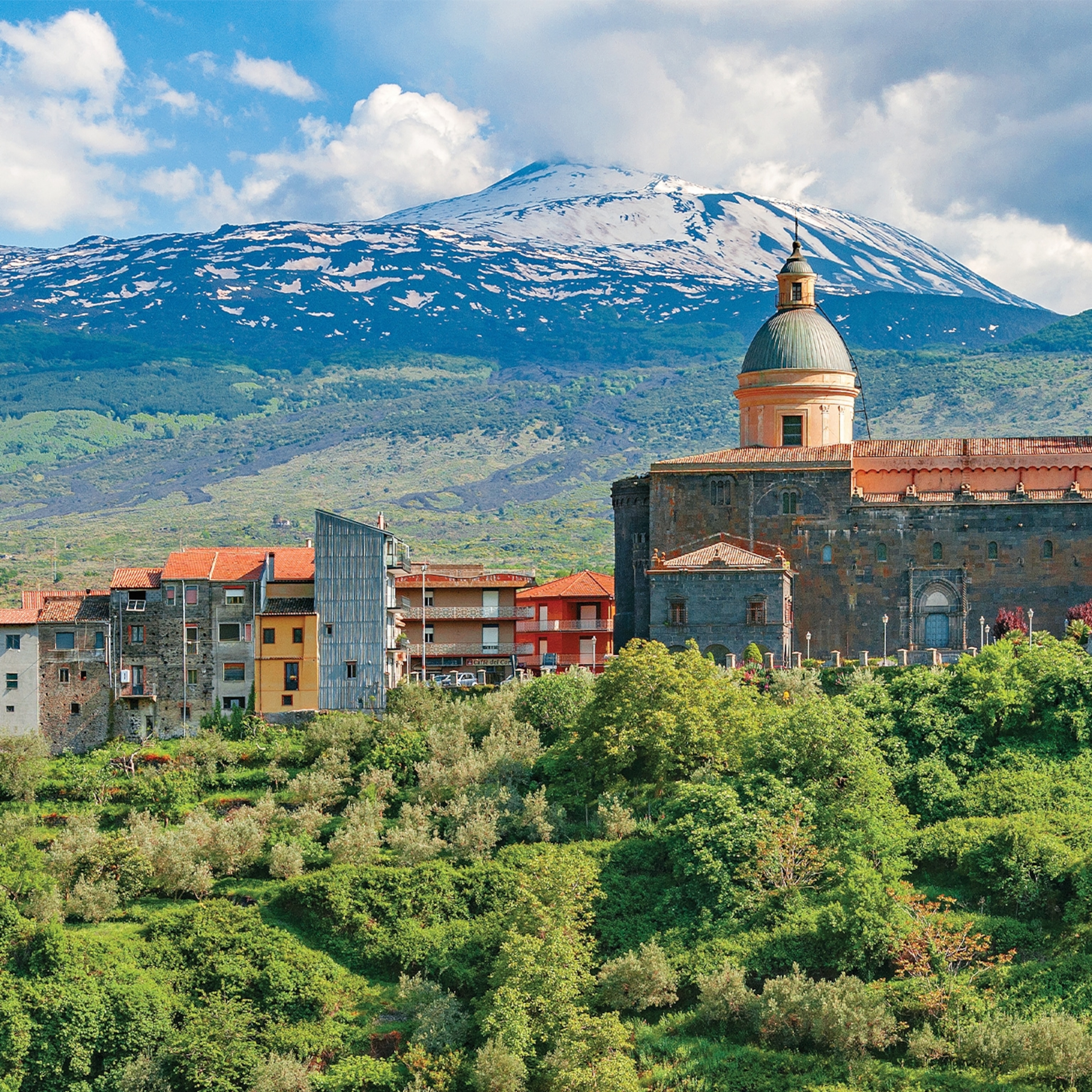Explore the French city where North African cuisine is a local favorite
One of Europe’s most multicultural cities, Marseille is home to a large North African population whose traditional dishes such as Brik pastry — sometimes given a modern twist — have become a key part of the local culinary culture.
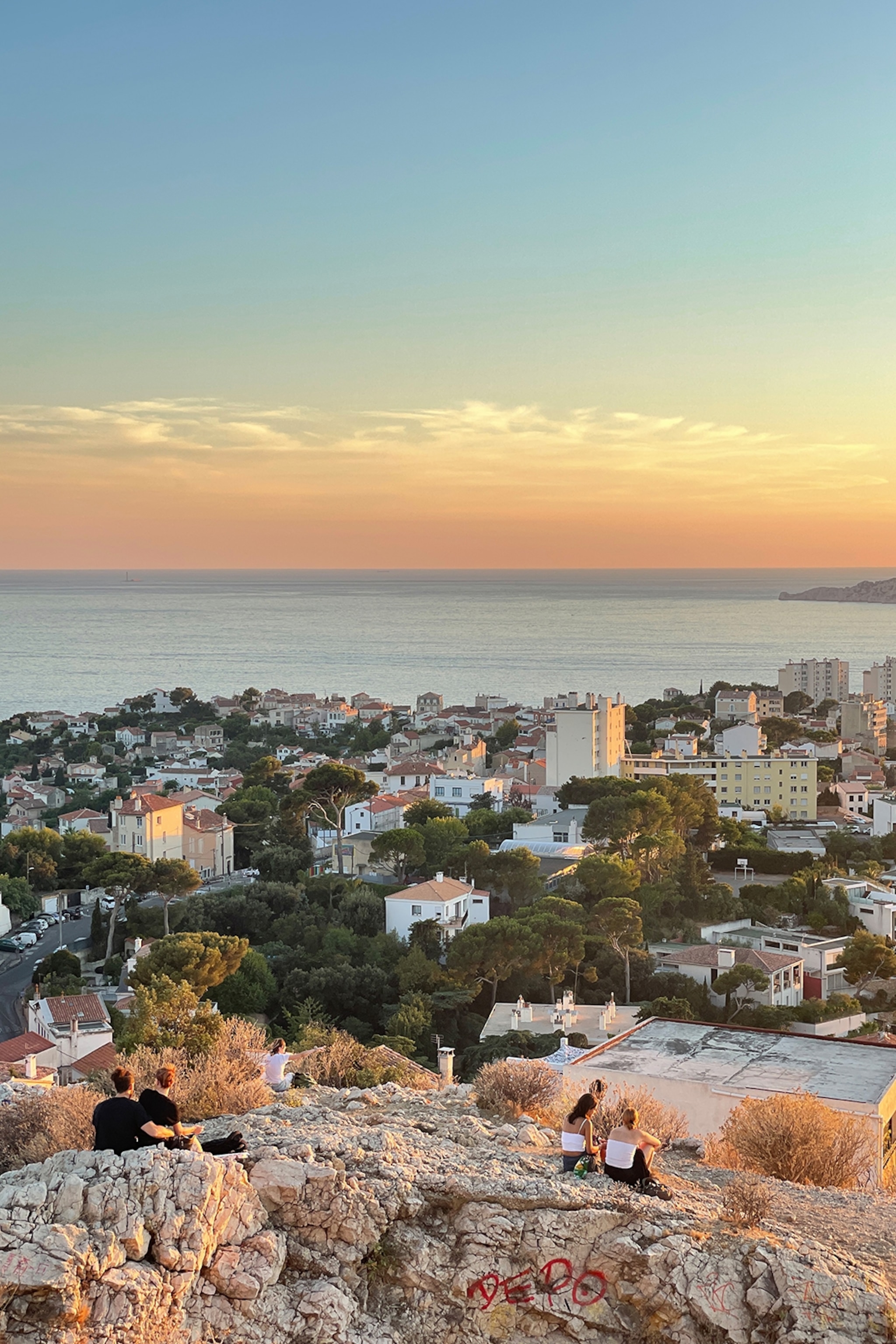
On the plate is what looks like a fist-sized, deep-fried wonton, perched on a dollop of deep red paste and paired with a wedge of lime.
I crack open the golden pastry shell to reveal a just-cooked egg on a bed of spiced potatoes studded with capers and strewn with luscious flakes of confit tuna.
Here at Marseille’s Les Rigoles restaurant, chef Johann Barichasse draws upon the flavours, ingredients and dishes of his Jewish-Algerian and -Moroccan heritage. That ‘wonton’ is his take on brik, a fried pastry found across North Africa. He’s tweaked the presentation (the dish is typically served as a triangle or half-moon rather than a bundle, as it is here) but the filling and the harissa are distinctly North African.

“It’s crispy, it has an egg — it’s comforting,” Johann says, explaining a key reason why he serves this dish. Another, he tells me, is because the pastry is familiar to people in Marseille, where an estimated third of the population is Muslim — predominantly of Algerian and Tunisian heritage.
France colonised much of North Africa, starting in the mid-18th century, and when it lost possession of the region in the 1950s and ’60s, those loyal to France — predominantly Algerians and Tunisians — sought an escape, and Marseille, located just north across the Mediterranean Sea, was the logical choice, being the biggest city on France’s southern coast. There’s been a steady stream of migration ever since, and today the city is considered one of the most multicultural in Europe. These North African immigrants brought their cuisine along with them, and brik is one of a handful of dishes that have become popular among Marseillais with French heritage, too.
According to Johann, young people from North African backgrounds are starting to take a more active interest in their roots. “My parents were exiles, so they didn’t have a connection to their culture,” the French-born chef tells me. “But the younger generation is more interested.” As a result, in addition to French-leaning dishes such as veal tartare and deep-fried sardines with aioli, Johann’s menu at Les Rigoles includes the likes of chreime, a tomatoey Jewish-Tunisian fish stew, which he reduces and serves on a bed of couscous, and kefteji, a ratatouille-like dish of chopped vegetables topped with merguez sausage and a fried egg.
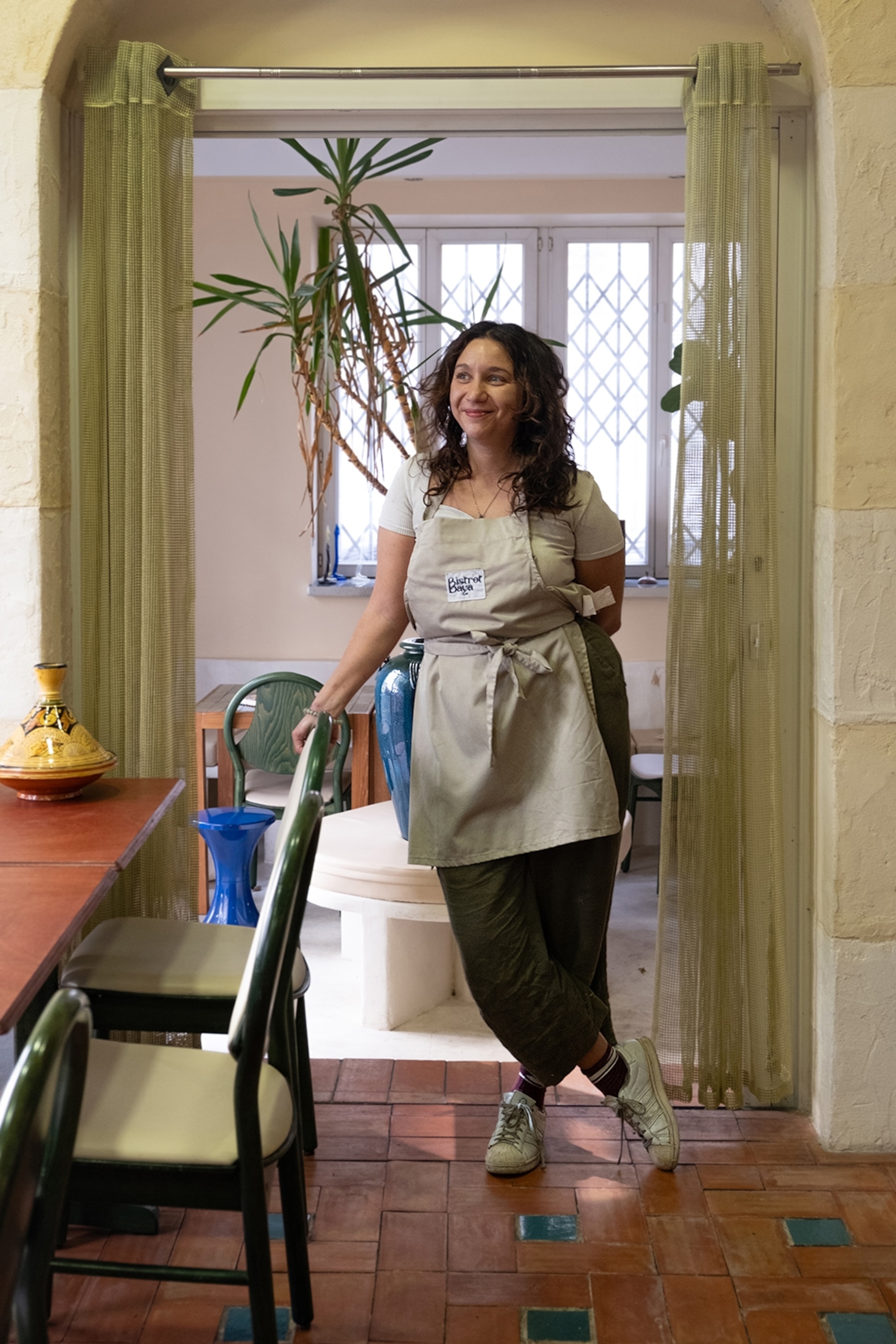
The next day, I seek out lunch in the leafy Longchamp neighbourhood, where, at Bistrot Baya, French-Algerian chef-owner Maeva Hocini is taking her family’s culinary legacy in a direction her ancestors might not have recognised. Her take on the French dish chou farci features the cabbage stuffed with an Algerian-leaning mix of rice, chopped anchovies and merguez. It’s served in a dish that has the cabbage bundle isolated at its centre, surrounded by a moat of tomato velouté. This rich soup is what brings those disparate stuffing elements together, a generous spoonful seemingly uniting Provence and North Africa.
“My grandmother spoke a different language, Kabyle, which I didn’t speak,” Maeva tells me after lunch. “But at the table, our language was food.” Bistrot Baya is the chef’s effort to connect with her Algerian roots, as well as her first experience cooking professionally. The restaurant has a charming DIY aesthetic that stems from mismatched vintage furniture and kitsch paintings on the wall. The short, hand-scribbled menu is just as eclectic, with dishes that have North African links, but that are also inspired by Maeva’s and her business partner’s travels, such as a Croatian ajvar — a chunky, pepper-based dip, which is boosted here with Algerian spices and a topping of toasted pine nuts. “I want to cook my origins,” says Maeva, who confesses she’s never been to Algeria. “It’s my only link with my story.”
Entering the ‘belly’
Another person reconnecting with her origins is Boutheina Ben Salem. Born in Tunisia and raised in Southern France, Boutheina ditched a life as a lawyer to cook seven years ago, and these days hosts North African food events in London and Marseille.
I catch her at the end of a stint in Marseille, just as she’s preparing to host a supper club dinner, and we meet at the market that unfolds every Sunday in the Old Port. Dating as far back as the Ancient Greek era, Marseille’s iconic anchorage today surrounds a busy yacht harbour. It’s guarded by two forts and is towered over by the 19th-century, hilltop Basilica of Notre Dame de la Garde.
At a market stall selling organic local fruit and vegetables, Boutheina sniffs herbs, scrutinises tomatoes and picks bunches of grapes. Clutching a basket filled to the brim with produce, she turns to me and asks, “Are you ready to enter the belly?”


Noailles — known colloquially as ‘the belly of Marseille’ — is the city’s predominantly North African neighbourhood. And although it’s only a five-minute walk from the Old Port, it feels as if we’ve crossed the Mediterranean. At another open-air market, which serves as the district’s heart, buyers squeeze fruit and haggle, and vendors bark prices. The narrow lanes that extend from the square are home to halal butchers, street vendors, food stalls, bakeries and shops fronted by huge trays loaded with dozens of varieties of olive and other preserved items. Arabic and Kabyle can be heard more than French. In one such lane, Boutheina leads me through a shop doorway that opens to reveal the largest selection of dried spices I’ve ever seen.
“I like this shop because he buys whole spices and grinds them in the back,” she says, selecting a mix that was ground just yesterday. A vendor offers me a sample of the house-made harissa, and I taste a dollop large enough to make both staff and customers gasp in terror. It does pack some heat, but that’s balanced by bitter flavours and fragrant aromas.
Our final stop is Boutheina’s Marseille pied-à-terre, also in Noailles, where she’s agreed to show me how to make her take on brik. “I just do my thing — I don’t call it upscale, I don’t call it traditional,” she says, when I ask about the origins of her recipe.
In the sunny top-floor apartment, she spreads harissa over a thin sheet of filo pastry, topping it with a ring of potatoes boiled in turmeric, capers and minced preserved lemon zest. She drops an egg yolk in the ring, folds the pastry sheet in half and fries the half-moon-shaped package in olive oil until it’s golden and crispy.
“In Arabic, we have something called ‘nafas’,” Boutheina tells me while frying. “It means ‘breath’ or it can mean ‘the thing that gives deliciousness to whatever you make’. You can follow the same recipe and use the same ingredients as someone else, but without the nafas, it won’t taste right.”
I tear into the brik, scattering flakes of pastry across the table. It’s delicious, the preserved lemon providing a citrussy, funky counterpoint to the starchy, rich filling; the nafas providing something that’s a bit harder to articulate.
In search of more nafas, I meet Alexis Steinman. Originally from upstate New York, she’s a travel writer and food-based tour guide with Culinary Backstreets. “I realised that nobody was writing about Marseille in English,” says the fluent French speaker of her motives for moving to a place that previously was associated less with cuisine and more with crime. “And food was an entry point to a city that’s very hard to understand.”
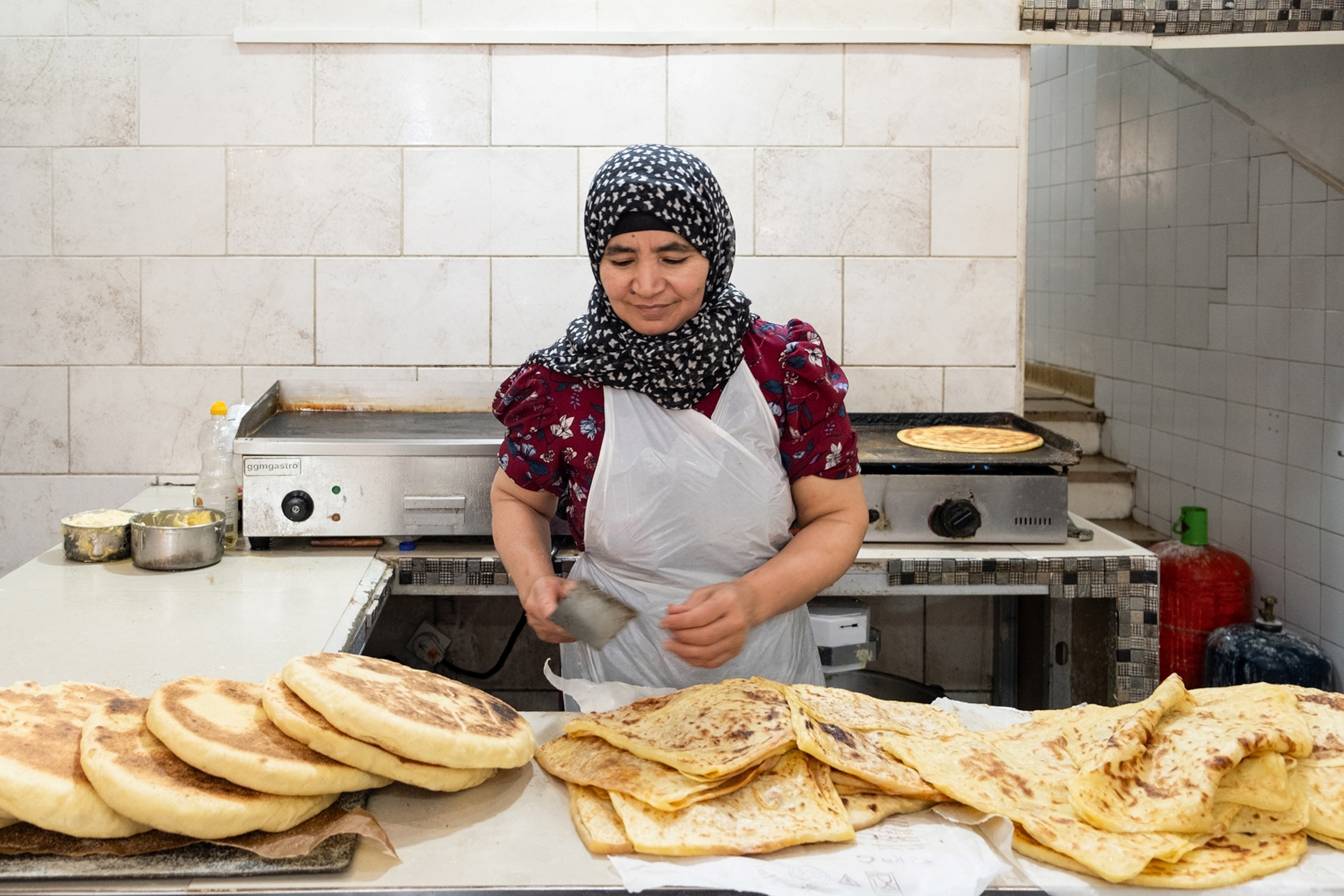
What follows is a whirlwind tour of Marseille’s North African highlights. At Maison Journo, a Jewish-Tunisian bakery and snack bar, Alexis orders fricassee, a savoury doughnut, sliced open, smeared with harissa and stuffed with tuna, fresh chilli, pickled vegetables, salted lemon, a spiced carrot paste and olives.
At Chez Sofiane, an Algerian-run bakery in Noailles, I have my first encounter with karantika, a name Alexis tells me stems from the Spanish ‘caliente’, meaning ‘hot’. The dish takes the form of a chickpea quiche dusted with dried spices and served with a dollop of the ubiquitous harissa. A plate of spice-rubbed, deep-fried sardines, french fries and a mixed salad seems to bridge North Africa and Marseille at Le Comptoir des Beaux Arts, a decades-old Algerian-run restaurant a few blocks away.
At Chez Yassine, a beloved Tunisian restaurant, also located in Noailles, I tear off chunks of fluffy baguette and toss them into a vast bowl of lablabi, a luscious, aromatic broth studded with tender chickpeas and topped with a poached egg. I pair this with a bottle of Tunisian citronnade: an unctuous and pleasantly bitter drink made from lemons — peel and all — that are simmered with sugar then strained.

The tour reaches its crescendo at Le Fémina. Founded in 1921, it’s one of Marseille’s oldest restaurants and the speciality here is couscous made from barley — a dish originating in the predominantly Berber Kabylia region of Algeria. It’s subtly sweet and nutty, fragrant with cumin and rich with smen (salted, fermented butter). I feel like I’m eating couscous for the first time.
The dish is served alongside various others, including a spiced stew combining chunky vegetables, lentils, chickpeas and black-eyed beans; and a leg of lamb, coated in spices and baked low and slow, for seven hours, until it’s pleasantly charred on the outside and perfectly tender inside. There’s also a nicely oily harissa made in-house with French espelette pepper, plus a single green, spicy grilled chilli. It’s all outstanding, but a plate of that couscous, perhaps with a drizzle of broth, would’ve been just as satisfying.
As we eat, Le Fémina’s fourth-generation owner, Mustapha Kachetel — sporting a goatee and traditional Algerian straw hat — sits down and pours us glasses of an Algerian rosé. He’s an exuberant, warm host, snapping selfies rather than eating, and I wonder aloud whether this type of food has broad appeal. Mustapha seems confused by my question, and after a flurry of French, Alexis summarises his thoughts on the matter. “If all the politicians ate couscous, the world would be a better place,” she says. After my time in ‘the belly’, I think I have to agree.
How to do it
Getting there & around
Marseille can be reached by rail, taking the Eurostar from London St Pancras and changing in Paris. EasyJet, Ryanair and British Airways all fly direct from UK airports.
Where to stay
Hôtel La Résidence du Vieux-Port offers eye-catching rooms and views of the Old Port and Basilica of Notre Dame de la Garde. Rooms from €179 (£148).
More info:
marseille-tourisme.com
To subscribe to National Geographic Traveller (UK) magazine click here. (Available in select countries only).
